Voles can quickly transform a beautiful yard into a damaged landscape with their extensive tunnel systems and plant destruction. These small rodents can produce up to 100 offspring per year, making effective repellent strategies crucial for long-term control. Our comprehensive guide covers the most effective vole repellents available in 2025, from proven castor oil solutions to innovative ultrasonic devices.
Quick Picks: Best Vole Repellents
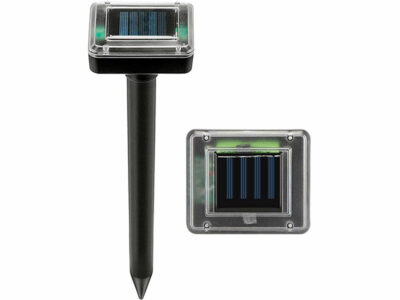
Editor’s Choice
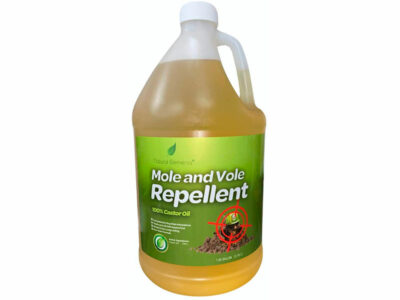
Best Spray
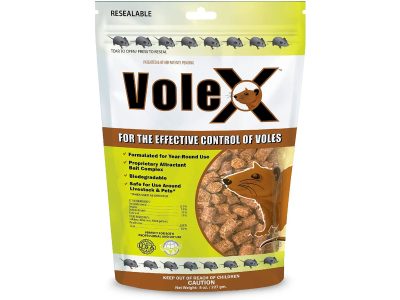
Best Granules
- Understanding Voles and Why Repellents Work
- Top 3 Best Vole Repellent Products Reviewed
- Types of Vole Repellents: Which Works Best?
- DIY Vole Repellent Recipes
- Application Strategies for Maximum Effectiveness
- Integrated Vole Management Approach
- Common Vole Repellent Mistakes to Avoid
- Cost Analysis: Repellents vs. Professional Treatment
- Frequently Asked Questions
- Conclusion
- Scientific Research and Regulatory Guidelines
Understanding Voles and Why Repellents Work
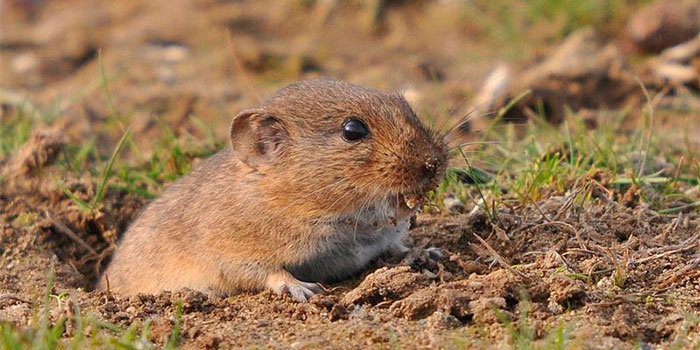
Voles are small, mouse-like rodents that measure 4-8 inches long with short tails, round bodies, and small eyes. Unlike moles that eat insects, voles are herbivores that consume grass, roots, bulbs, and bark. These prolific breeders can produce up to 100 offspring per year, making early intervention crucial for preventing population explosions.
Voles feed on a wide range of garden plants, turf, and landscape plantings. They can kill fruit trees by gnawing bark either above or below ground within a few inches of the soil line. The key to effective vole control is using repellents that target their sensitive senses of smell and taste.
Top 3 Best Vole Repellent Products Reviewed
After extensive research and analysis of current market options, we’ve identified the most effective vole repellents available in 2025. These products offer different approaches to vole control, allowing you to choose the best option for your specific situation.
Solar-Powered Ultrasonic Vole Repellent Spikes
Editor's ChoiceHow Does It Work
How to Use
- Install units every 50-100 feet for optimal coverage
- Place in areas with direct sunlight for maximum solar charging
- Insert stakes deep into the ground for stable installation
- Allow 1-2 weeks for full effectiveness as voles relocate
- No chemicals or ongoing maintenance required
- Covers large areas up to 6,500 sq ft per unit
- Weather-resistant and waterproof design
- Solar-powered operation eliminates electricity costs
- Safe for children, pets, and environment
- Requires direct sunlight for optimal performance
- Initial investment higher than chemical alternatives
- May take 1-2 weeks to show full results
Natural Elements 100% Castor Oil Repellent
Best SprayHow Does It Work
How to Use
- Mix concentrate with water according to package directions
- Apply using garden sprayer or hose-end attachment
- Water treated areas thoroughly to ensure soil penetration
- Reapply every 30-60 days or after heavy rainfall
- 100% natural and biodegradable formula
- Safe for children, pets, and beneficial insects
- Covers up to 20,000 square feet per gallon
- Won't harm plants or soil health
- Cost-effective for large areas
- Requires reapplication after heavy rain
- May take several applications for stubborn infestations
- Strong odor during application
VoleX Granules
Best GranulesHow Does It Work
How to Use
- Apply granules evenly using a spreader or by hand
- Water lightly after application to activate
- Reapply every 30-45 days for continued protection
- Store unused product in a cool, dry place
- Easy application with no mixing required
- Long-lasting granular formula
- Resealable container for storage
- Works on multiple burrowing pests
- Less coverage area than liquid concentrates
- Best results in moderate weather conditions
- May require frequent reapplication in wet climates
Types of Vole Repellents: Which Works Best?
Understanding the different types of vole repellents available helps you choose the most effective solution for your specific situation. Each type has unique advantages and applications.
Castor Oil-Based Repellents
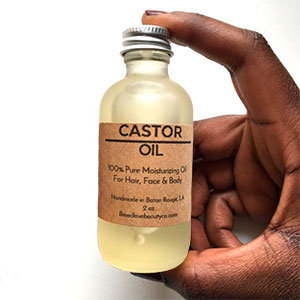
Castor oil is the gold standard for vole repellents, proven effective in scientific studies. Research shows that castor oil-based repellents were successful in 26 out of 27 field tests. The oil works by creating an unpleasant taste and odor that voles find intolerable without causing them harm.
Key benefits of castor oil repellents:
- Penetrates soil to reach underground tunnel systems
- Biodegradable and environmentally safe
- Safe for children, pets, and beneficial wildlife
- Effective against multiple burrowing pests
- Available in spray and granular formulations
Ultrasonic Repellent Devices
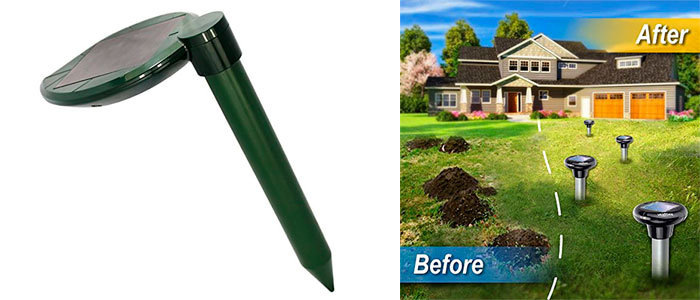
Ultrasonic devices emit high-frequency sound waves that are uncomfortable for voles but inaudible to humans. Modern solar-powered units offer continuous operation without electrical connections or battery replacements.
Natural and Homemade Repellents
Several household items can serve as effective vole deterrents:
Pepper-Based Repellents
Cayenne pepper and hot pepper sprays create an unpleasant burning sensation that deters voles from treated areas.
Garlic Solutions
Garlic cloves crushed and mixed with water create a strong-smelling deterrent that voles find offensive.
Essential Oil Blends
Peppermint, spearmint, and eucalyptus oils overwhelm voles’ sensitive sense of smell when applied to cotton balls.
DIY Vole Repellent Recipes
Creating your own vole repellents can be cost-effective for large properties or ongoing maintenance. Here are proven homemade formulations:
Basic Castor Oil Spray
Ingredients:
- 3 oz castor oil
- 1.5 tablespoons liquid dish soap
- 1 gallon water
Instructions: Mix castor oil and dish soap thoroughly, then add to water in spray bottle. Shake vigorously before each use and apply liberally around affected areas. Reapply weekly for best results.
Enhanced Garlic-Castor Oil Formula
Ingredients:
- 0.5 cup castor oil
- 8 cloves crushed garlic
- 1 gallon water
Instructions: Steep crushed garlic in hot water for 30 minutes, strain, then mix with castor oil. Apply using garden sprayer, focusing on tunnel entrances and damaged areas.
Diatomaceous Earth Blend
Ingredients:
- 1 cup food-grade diatomaceous earth
- Castor oil (enough to make mixture crumbly)
- 3 drops black pepper essential oil per cup of DE
Instructions: Mix ingredients until crumbly consistency is achieved. Sprinkle lightly around vole activity areas. The fragrant mixture deters voles while the DE provides additional texture they dislike.
Pro Tip
Acting quickly is crucial when dealing with vole problems. The longer you wait, the more established their tunnel systems become, making removal more difficult.
Application Strategies for Maximum Effectiveness
Proper application technique significantly impacts repellent effectiveness. Follow these proven strategies for best results:
Timing Your Applications
Apply vole repellents during peak activity periods for maximum impact:
- Fall: Best time for preventive applications before winter damage
- Early Spring: Target emerging voles after winter dormancy
- After Rain: Reapply castor oil products that may have washed away
- Before Planting: Treat bulb and root areas before installation
Coverage and Placement
Strategic placement ensures comprehensive protection:
- Treat a 10-20 foot border around your entire property
- Focus on areas with existing vole activity
- Apply around valuable plants and tree bases
- Cover tunnel entrances and runways thoroughly
Maintenance Schedule
Consistent reapplication maintains repellent effectiveness:
- Castor oil sprays: Every 30-45 days
- Granular products: Every 60-90 days
- After heavy rainfall: Within 1-2 days
- Seasonal renewals: Fall and spring applications
Integrated Vole Management Approach
The most effective vole control combines multiple strategies for comprehensive protection:
Habitat Modification
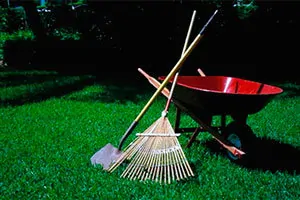
Reducing vole-friendly conditions enhances repellent effectiveness:
- Remove Cover: Clear tall grass, weeds, and brush piles
- Eliminate Food Sources: Clean up fallen fruit, nuts, and seeds
- Reduce Mulch: Maintain thin mulch layers around plants
- Tree Protection: Install hardware cloth around tree trunks
Physical Barriers
Combine repellents with exclusion methods:
- Install 1/4-inch mesh wire fencing 12 inches deep
- Wrap tree trunks with metal guards
- Add sharp gravel around plant bulbs
- Create inhospitable ground cover with perlite
Monitoring and Evaluation
Track your control efforts to optimize results:
- Document vole activity areas before treatment
- Monitor for new tunnel systems weekly
- Adjust repellent placement based on activity patterns
- Evaluate effectiveness after 2-3 weeks
Common Vole Repellent Mistakes to Avoid
Learning from common errors improves your success rate:
Application Errors
- Insufficient Coverage: Skipping areas allows voles to find untreated zones
- Wrong Timing: Applying during rain reduces effectiveness
- Inadequate Watering: Castor oil needs water activation to penetrate soil
- Inconsistent Reapplication: Allows protection gaps that voles exploit
Product Selection Mistakes
- Choosing wrong formulation for your situation
- Using ineffective home remedies like coffee grounds
- Expecting immediate results from slow-acting products
- Not combining methods for severe infestations
Cost Analysis: Repellents vs. Professional Treatment
Understanding the economics helps you make informed decisions:
| Treatment Type | Initial Cost | Coverage Area | Annual Maintenance | Total First Year |
|---|---|---|---|---|
| DIY Castor Oil Spray | $25-40 | 5,000 sq ft | $60-80 | $85-120 |
| Commercial Granules | $30-60 | 5,000 sq ft | $90-180 | $120-240 |
| Ultrasonic Devices | $120-200 | 6,500 sq ft | $0-20 | $120-220 |
| Professional Service | $200-500 | Variable | $150-300 | $350-800 |
Frequently Asked Questions
What scent will keep voles away most effectively?
Castor oil is the most scientifically proven scent repellent for voles. Studies show it was effective in 26 out of 27 field tests. The oil creates an unpleasant taste and odor that voles find intolerable without causing them harm.
Other effective scents include garlic, peppermint oil, and cayenne pepper. For best results, rotate between different scent-based repellents to prevent voles from becoming accustomed to any single odor.
Do ultrasonic vole repellents actually work?
Ultrasonic repellents can be effective as part of an integrated approach, but research shows mixed results when used alone. Laboratory studies indicate rodents initially avoid ultrasonic frequencies, but they may overcome this aversion when food sources are present.
Modern solar-powered ultrasonic devices that emit frequencies around 400Hz show better results than older models. For optimal effectiveness, use ultrasonic repellents in combination with castor oil treatments and habitat modification.
How often should I reapply vole repellents?
Reapplication frequency depends on the product type and weather conditions. Castor oil sprays typically need reapplication every 30-45 days, while granular products may last 60-90 days. Heavy rainfall can wash away treatments, requiring more frequent applications.
Monitor treated areas weekly for new vole activity and reapply immediately if you notice fresh tunnel systems or plant damage.
Are vole repellents safe for children and pets?
Most commercial vole repellents using castor oil as the active ingredient are safe for children and pets when used as directed. Castor oil is biodegradable and non-toxic, though it can cause digestive upset if consumed in large quantities.
Always read product labels carefully and keep children and pets away from treated areas until products have been watered in or dried completely. Avoid products containing rodenticides or synthetic chemicals if safety is a primary concern.
Will mothballs effectively repel voles?
No, mothballs are not effective vole repellents and should be avoided. There is no scientific evidence supporting their effectiveness against voles, and they pose serious health risks to children, pets, and beneficial wildlife.
Mothballs contain toxic chemicals that can contaminate soil and groundwater. Instead, use proven alternatives like castor oil-based repellents or professional-grade products specifically designed for vole control.
Can I use vole repellents around edible plants?
Yes, castor oil-based repellents are safe to use around vegetable gardens and edible plants. The oil is food-grade and won’t contaminate your crops. However, avoid applying repellents directly to edible portions of plants.
Focus applications on soil around plants rather than on foliage that will be consumed. Always wash harvested vegetables and fruits thoroughly regardless of pest control methods used.
Conclusion

Effective vole control in 2025 requires a strategic approach combining proven repellent technologies with proper application techniques and habitat management. The most successful programs use multiple methods tailored to specific property conditions and infestation levels.
Key takeaways for successful vole control:
- Castor oil remains the gold standard for vole repellents, with proven effectiveness in scientific studies
- Solar-powered ultrasonic devices offer chemical-free protection when properly positioned and maintained
- Early intervention and consistent application prevent small problems from becoming major infestations
- Integrated approaches combining repellents, barriers, and habitat modification achieve the best results
- Regular monitoring and prompt reapplication maintain long-term protection
Remember that vole control is an ongoing process rather than a one-time treatment. By choosing the right combination of products and methods for your specific situation, you can protect your lawn and garden from vole damage while maintaining environmental safety.
Whether you choose commercial products like our top-rated ultrasonic spikes, proven castor oil formulations, or create your own DIY solutions, consistency and proper application are the keys to success. Start with our recommended products, monitor results carefully, and adjust your approach based on observed vole activity patterns.
With the right tools, techniques, and persistence, you can successfully reclaim your outdoor spaces from vole damage and enjoy a beautiful, healthy landscape year-round.
Scientific Research and Regulatory Guidelines
Our recommendations are based on extensive research from leading agricultural universities and federal agencies. For additional information on vole control methods, consult these authoritative sources:
- University of Nebraska Extension Vole Control Guide – Comprehensive identification and management strategies
- USDA NIFA Integrated Pest Management Programs – Federal research on sustainable pest control
- EPA Pesticide Registration Guidelines – Regulatory information on approved pest control products

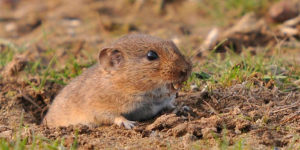
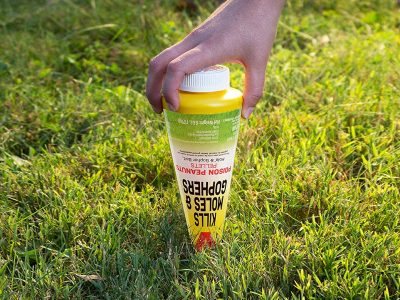

So far nothing has worked. The sonic spikes are a joke. The voles have basically tunneled right around them. I’ve used a spray like the Ortho one pictured around all my beds. New tunnels and holes occur everyday. I’m at wits end trying to do this organically. I think I may go to warfarin as the least toxic of the toxic alternatives.